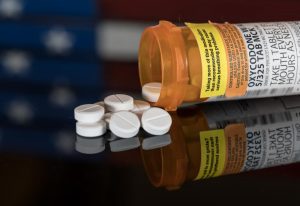When someone reaches a point where they feel they need help to overcome an Adderall addiction, they might need treatment in a rehab facility. Such facilities provide outpatient and inpatient Adderall rehab programs, depending on what suits your needs.
The support, assistance, and care provided in a rehab treatment facility do more than get you off Adderall. You will also learn the skills that will help you recover and live a sober life in the future. Adderall rehab treatment programs also teach you techniques you can use to handle daily tasks and manage stress without using Adderall. Most centers even allow you to practice handling specific situations you may experience when you go back home.
Since Adderall is a stimulant, addiction to this class of drugs can require a specific mode of intense behavioral therapy called the Matrix Model. This method has been found to be highly effective in addressing stimulant addiction. It involves the patient and therapist cultivating a close relationship to work on boosting the patient’s sense of self-worth and self-esteem while including the following:
 Engagement in self-help groups
Engagement in self-help groups- Urine tests to confirm abstinence
- Drug education
- Relapse prevention training
- Individual/group/family therapy sessions
When it comes to recovery from Adderall addiction, the two primary approaches used are psychotherapy and medication-assisted treatment (MAT). Treating an Adderall use disorder involves re-learning how to function and live without using the drug since it is already quite addictive.
Outpatient treatment allows you to stay home while going through Adderall rehab to be with loved ones and continue with day-to-day responsibilities. On the other hand, inpatient treatment requires the patient to stay in the rehab facility during the program.
Inpatient rehab is typically recommended for anyone suffering from a severe to moderate Adderall addiction or multiple addictions. This option allows the individual to recover in a fully sober environment devoid of triggers or temptations. Inpatient or residential rehab can last 28-90 days or longer as needed.
Residential rehab treatment involves following a strict daily schedule that can include group activities, family visits, exercise, free time, mealtimes, support meetings, psycho-education, process groups, and therapy.
Detox
 The first step of Adderall rehab is managing the withdrawal experienced after quitting the drug. The user will also learn to manage warning signs and relapse triggers during the initial stages of recovery. The inability to concentrate, depression, and fatigue are a few withdrawal symptoms that can make it challenging to stay sober without professional assistance. Going through recovery in a certified treatment facility allows the trained staff to monitor your detox process to manage withdrawal symptoms safely.
The first step of Adderall rehab is managing the withdrawal experienced after quitting the drug. The user will also learn to manage warning signs and relapse triggers during the initial stages of recovery. The inability to concentrate, depression, and fatigue are a few withdrawal symptoms that can make it challenging to stay sober without professional assistance. Going through recovery in a certified treatment facility allows the trained staff to monitor your detox process to manage withdrawal symptoms safely.
Supervised medical detox is the best and safest option to quit Adderall use instead of quitting cold turkey. During this process, a doctor conducts a medical assessment of the patient, and a counselor does a full medical intake to determine the amount of Adderall in the user’s body. Depending on the information obtained, the attending physician develops a personalized tapering plan suited to the individual’s specific needs.
Detox for heavy Adderall users typically utilizes a taper-down strategy. This method helps to eliminate the drug from the individual’s body gradually to ease uncomfortable withdrawal symptoms like fatigue and depression. Even though detox can occur in a rehab facility that is properly equipped to offer this service, some patients can go through the process in a separate detox facility or hospitalization program. Both psychotherapy and MAT can be employed in the same rehab treatment program, whether outpatient or inpatient.
Therapy and Counseling
After the drug is out of the individual’s body, continuous support and therapy will be necessary to help maintain sobriety. This next step of Adderall rehab after detox is known as abstinence maintenance. It helps the person explore the underlying cause of their substance use disorder, which is a crucial part of recovery.
Counseling helps to identify the academic, professional, or social stressors that could be triggering the individual’s need to use the drug. A trained therapist can help the patient work through any negative feelings they’re experiencing and find healthy alternative ways to get through them. Each rehab facility typically has licensed therapists who will use a psychotherapy approach aligned with their treatment philosophy.
Cognitive Behavioral Therapy (CBT)
 Most rehab centers also provide Cognitive Behavioral Therapy (CBT) to treat Adderall use disorder. CBT is used in addiction treatment for a wide range of drugs. Most of the time, drug abuse usually begins when people turn to an addictive substance as a coping strategy. CBT sessions can explore why an individual was first motivated to use the drug and eventually abuse it, whether or not they had a prescription. An example would be a college student who started using Adderall to deal with the pressure of being in an achievement-centered environment.
Most rehab centers also provide Cognitive Behavioral Therapy (CBT) to treat Adderall use disorder. CBT is used in addiction treatment for a wide range of drugs. Most of the time, drug abuse usually begins when people turn to an addictive substance as a coping strategy. CBT sessions can explore why an individual was first motivated to use the drug and eventually abuse it, whether or not they had a prescription. An example would be a college student who started using Adderall to deal with the pressure of being in an achievement-centered environment.
A CBT counselor will work with individuals recovering from Adderall abuse to help them develop healthy new life skills and coping mechanisms. This approach can also be employed in a group setting whereby the counselor guides and leads the group while following the necessary psychotherapy treatment guidelines. However, please note that group psychotherapy sessions are different from self-help groups like 12-step programs, which are self-directed or member-led.
Some rehab centers might host 12-step program meetings as part of the treatment program or offer transportation to a group nearby. These sessions are separate from rehab programs; anyone in recovery can always attend when you find one. 12-step programs are essential for recovery after completing Adderall rehab. This falls under aftercare. After completing intensive rehab treatment in a facility, individuals in recovery are typically encouraged to engage in various supportive services that will help to foster recovery and abstinence.



